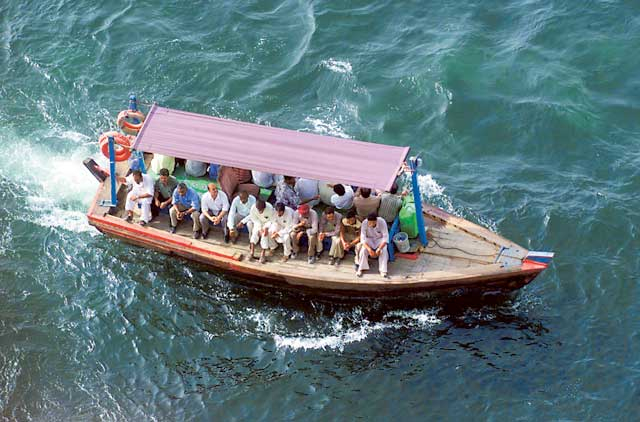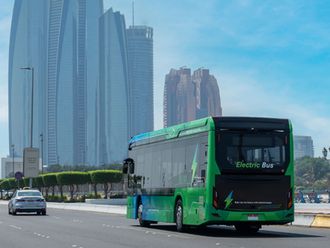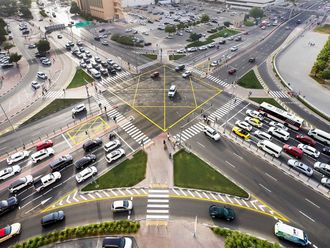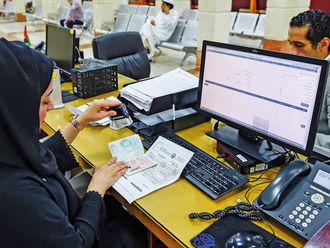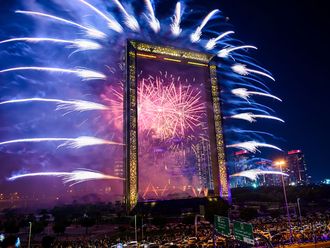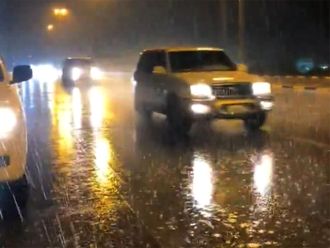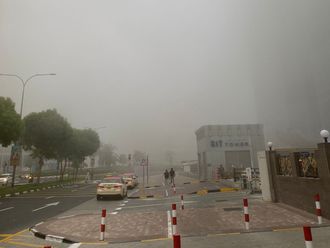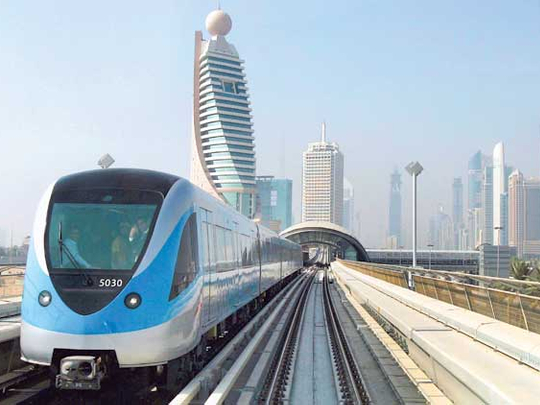
Dubai: Just over four decades ago, when the first road in Dubai was laid, who would have imagined a million cars in Dubai? Not many would have envisaged the Metro either when a fleet of five buses was launched in 1968 as the first public bus service.
The same year the first motorised abras were also launched replacing rowing boats — which for the 3,000 residents of Dubai until then was the only quick way to travel between Deira and Bur Dubai.
Fast forward to 2013, and the teaming neighbourhoods of Deira and Bur Dubai have more cars than the number of people that lived in the entire country 50 years ago. There are more options to travel around the city now than the number of abras the city had back then.
Looking back as the UAE celebrates its 42nd National Day, it’s hard to imagine how much and how fast the city has progressed in just a few decades. The abras have stayed but they are complemented by water taxis, ferries and water buses. The number of buses has grown from five to 1,571 and then there is a Metro that has really put Dubai’s public transport on the fast track.
The world’s longest driverless Metro network, the region’s widest bus network and a variety of marine transport modes have put Dubai on the map of the world’s mass transit pioneers. What is astonishing is the pace at which the transformation has been achieved.
Dubai Metro
Dubai’s masterstroke in mass transit came with the launch of Dubai Metro, which has transformed the way people travel in the city.
Before the launch of the Metro in 2009, Dubai’s roads were notorious for traffic jams, which eased dramatically as thousands opted to travel by Metro.
“The launch of Dubai Metro strategically contributed to our efforts of achieving our goals. When the Metro officially opened on September 9, 2009, nearly ten per cent of Dubai’s population used it in its first two days of operation. Passenger numbers went from 1.8 million in October 2009 to approximately 5 million in May 2011, an increase of 178 per cent in just 18 months,” said Mohammad Yousuf Al Mudharreb, Director of Metro Operations at the RTA’s (Roads and Transport Authority) Rail Agency.
What the Metro has done to Dubai’s transport scene can be seen from the phenomenal number of people using it.
“The number of riders using the Dubai Metro Red Line over the last six months has topped 43,552,110 at a rate exceeding seven million riders per month, whereas the number of riders using the Metro Green Line during the same period clocked 23,549,206 riders at a rate of about four million riders per month,” added Al Mudharreb.
He says that the rail network, which will see major expansions over the next few years, has helped Dubai stay ahead.
“I’m pleased to say that public transport in the emirate has now evolved into a progressive and dynamic system. Since the RTA was established in 2005 we set an ambitious goal to increase our public transport market share from 6 per cent in 2006 to 20 per cent in 2020. The purpose was to develop mass transit modes with the aim of making them the favourite means of resident mobility across the emirate, which I think we are on the way to achieving,” he added.
Bus network
Complementing the growing popularity of the Metro is the ever-expanding bus network of the emirate.
Before the launch of the Metro the bus was the only and most popular mode of transport and the service has grown phenomenally since the RTA took over the transport mandate in Dubai.
“Dubai’s first public transport bus service started in 1968 with five buses and as the demand for public transport started to grow, supporting the vision of sustainable growth and development of the city, the fleet also grew, reaching 305 buses in 2001. However, in the next decade bus service and ridership increased dramatically in keeping with the tremendous investment in infrastructure project,” said Dr Yousuf Al Ali, CEO of the RTA’s Public Transport Agency.
The RTA currently operates a fleet of 1,571 buses transporting 112 million passengers per year. However, it is not only quantity the authority has focused on, but the quality of the service and the value-added facilities that the RTA believes have attracted more people to public transport.
“With the evolution of the city, the public bus fleet was strengthened by importing modern buses adopting the latest technologies that provide the highest standards of both safety and luxury. Currently the public bus network covers approximately 85 per cent of the urban areas of Dubai. Latest technologies, including the use of WiFi, catering services, electronic destination boards, low floor buses and the use of green energy have helped the transport system stay up to date,” he added.
History
But the bus was not the first mode of public transport in Dubai. The abra, a small wooden boat that has traditionally been used to cross the Creek, is considered to be the first.
“The abra is considered the first mode of transportation in the emirate of Dubai as it was used to transfer passengers between Deira and Bur Dubai since 1892 using a rowing boat constructed by date palm fronds. The abra service has witnessed continuous development since then as the boats continued to improve their technologies,” said Al Ali.
In 1908 the rowing wooden boats were introduced, an improvement from boats made with date palm fronds, which continued to be used until 1968 when marine diesel engines were installed on the wooden boats that enhanced the service and speed of travel.
Although the RTA has continued with the diesel boats, the authority has made several changes to the boats and introduced a range of marine transport systems.
“The RTA has given importance to the abra due to the tradition behind it. It is considered to be a symbol of the marine public transportation in Dubai. We have applied quality enhancements to the vessels as well as safety and environmental additions to guarantee the quality of service given to costumers. And as a second phase we developed new electric abras to work as an environmentally friendly service in the new developments with water features such as Global Village and Dubai Marina and Downtown Lake at Burj Khalifa,” said Al Ali.
The RTA has also introduced the water bus, water taxi and ferry services on Dubai Creek as well as at waterfront areas of the city.
The future
Keeping pace with the phenomenal growth of the city and in keeping with the demands of a growing population, major infrastructure and transportation projects are being designed and planned, many of them already in the later stages of completion.
Some of the major projects to come up in the next five years are the Dubai Tram project, an extension of the Dubai Metro network, increasing the number of crossings on Dubai Creek as well as implementing the Cycling Master Plan.
Projects to come up in the next five years:
Completion of the Dubai Tram project, which is 14km along Al Sufouh Road, and will include 19 stations and operate 25 trams each capable of carrying 400 passengers.
Extension of Dubai Metro’s Red and Green Lines, in particular the extension of the Metro Green Line towards Academic City.
Adding capacity to Dubai Creek crossings: In particular, a 12-lane Al Ittihad bridge replacing the Floating Bridge, that will be ready by 2017. The Floating Bridge will be moved near the Sheraton Hotel on Dubai Creek, linking Shaikh Khalifa Bin Zayed Road in Bur Dubai to Omar Bin Al Khattab Road in Deira.
Implementation of the Dubai Bicycle Master Plan that will develop a 500km network of bicycle routes around Dubai as well as develop infrastructure for pedestrians.
Increase the public transport market share from the current 12 per cent.


